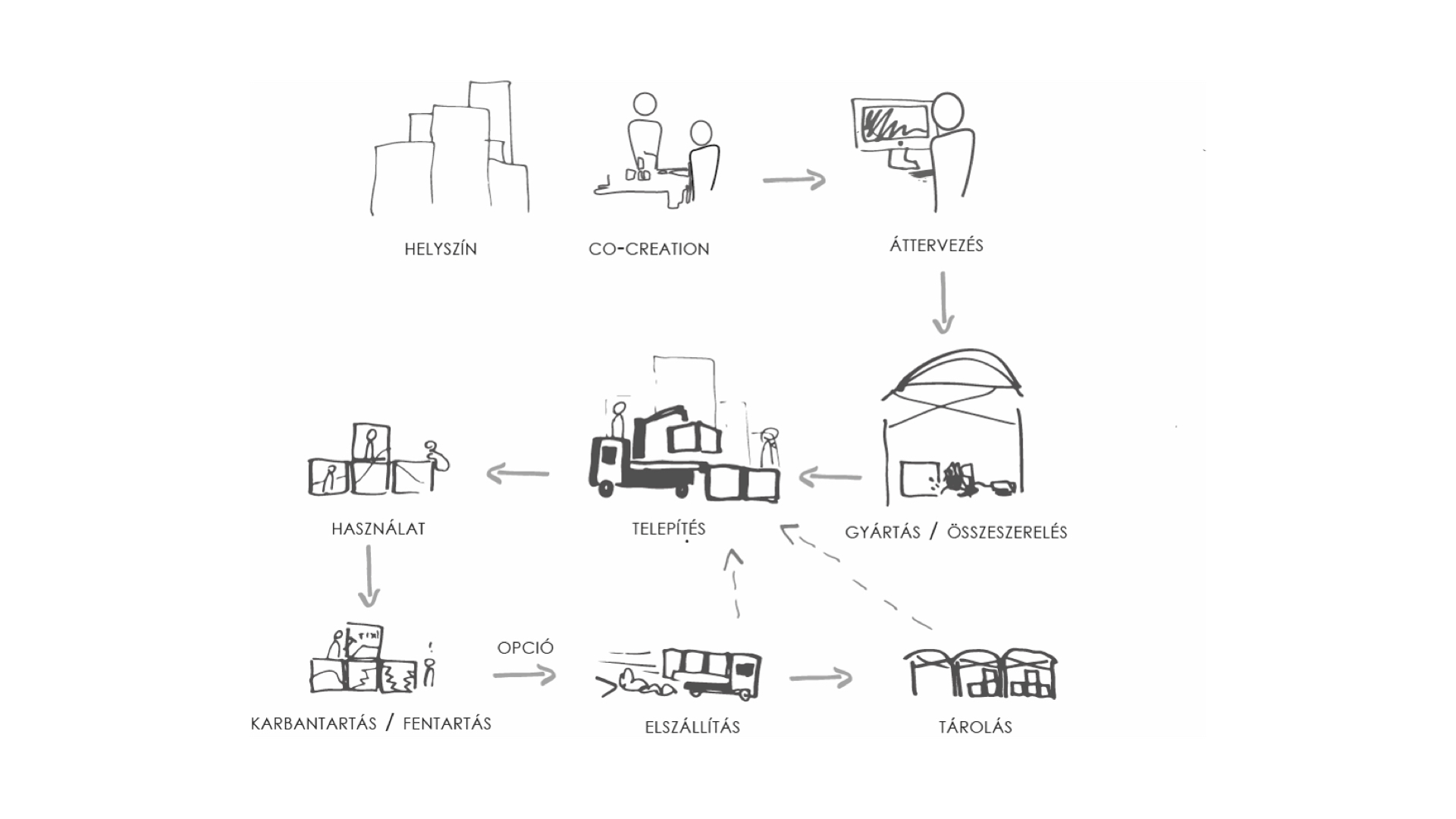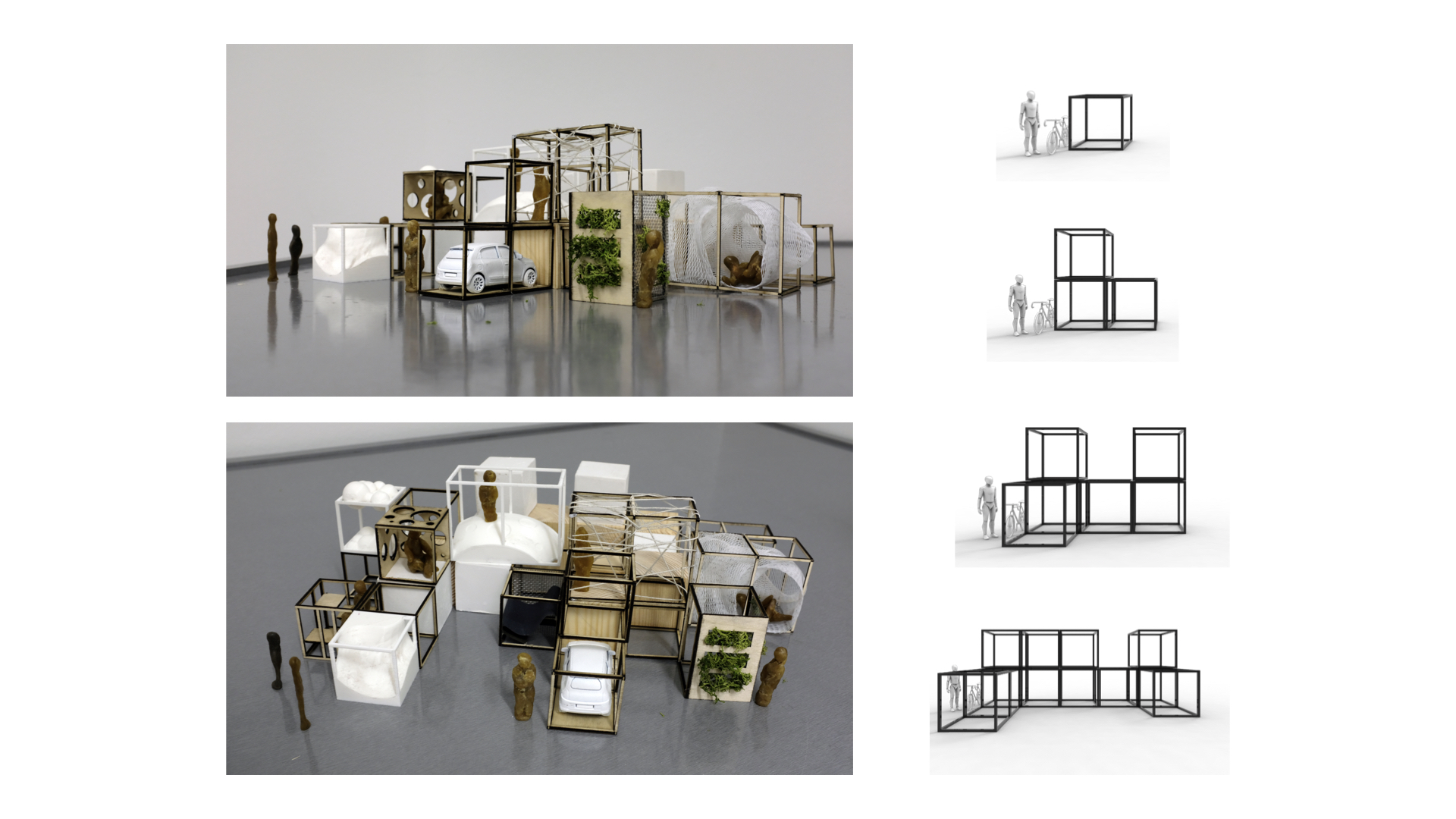CHILD FRIENDLY CITY
PARTICIPATORY URBAN PLANNING
WITH CHILDREN
Design Research & Concept Development
Team: Gabriella Farkas, Markus Hermann, Patricia Csobánczi
PROJECT DESCRIPTION
The project, co-ordinated by the Project and Development Office of MOME, commissioned by the Municipality of Budapest, aimed to create new values and child-friendly solutions based on the results of three years of research and concept development process made by MOME Ecolab.
The main goal of the course was to promote co-design with the target group - in this case, the children. We held a problem-mapping workshop with the children about the development opportunities of the urban environment and the concepts developed by our group were validated by the target group. The results of the project have become an adaptable design concept based on innovative participative research that respond to the needs of a given age group along the lines of security, education and entertainment.
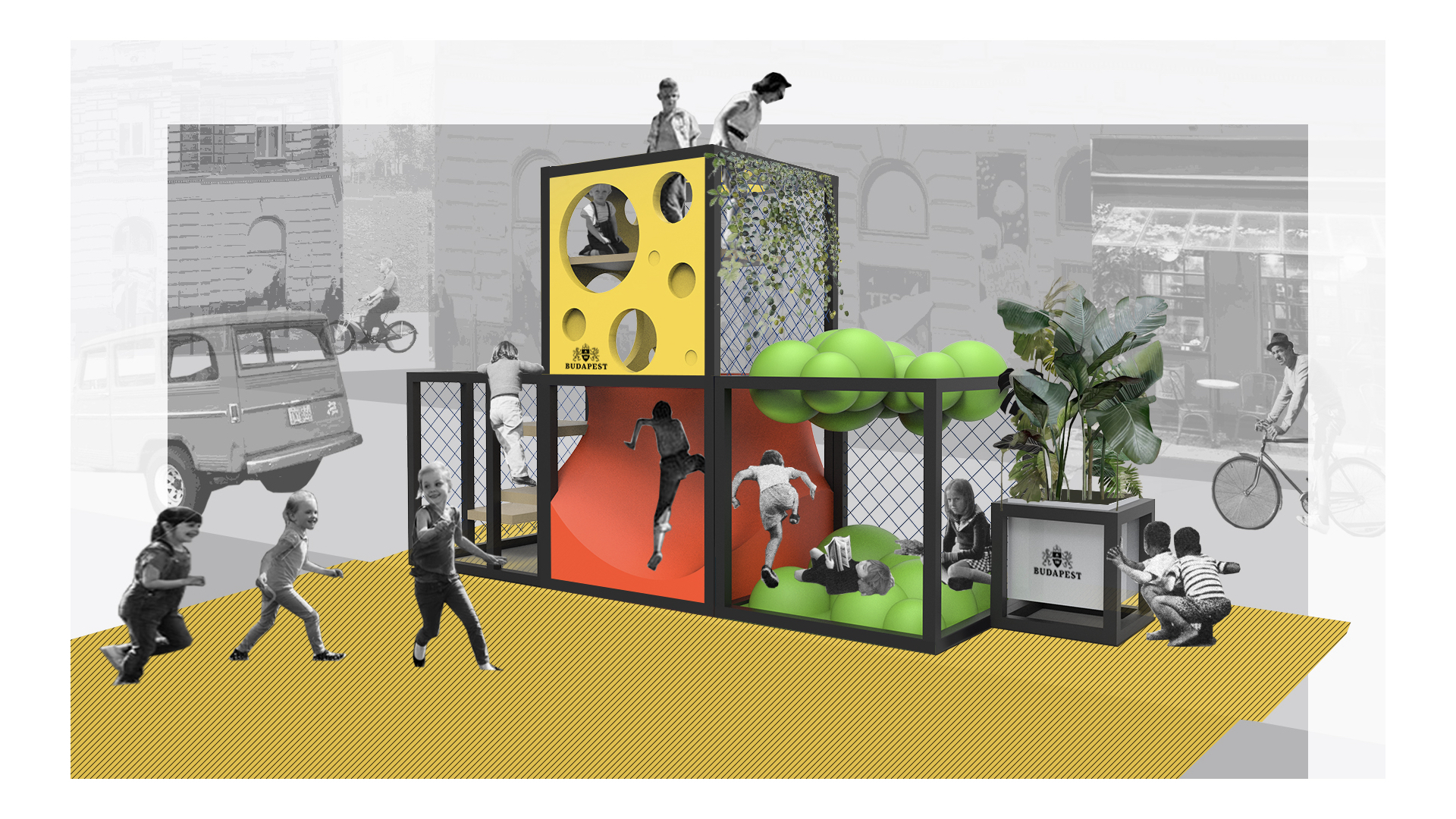
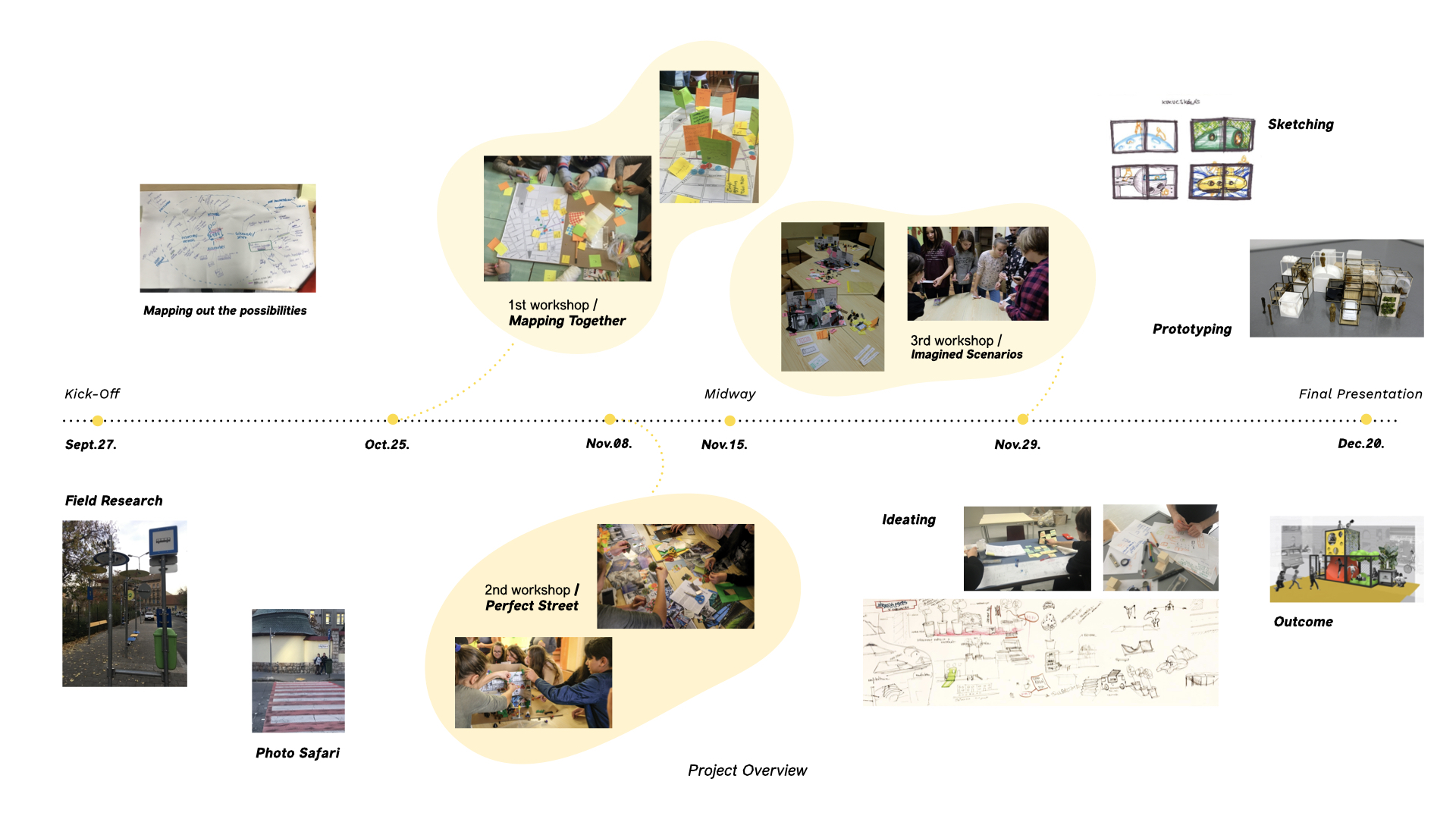
01 / MAPPING TOGETHER WORKSHOP
The first workshop’s goal was to gather knowledge about the children’s everyday life around school. We were curious how they use the public space surrounding the school, and asked them which routes they take to get to school, what they do and where they go after school, and show us memorable places categorized into positive, negative, and neutral experiences/feelings.
To achieve this, we made a map of the school and its 200 meter radius and used post-its, markers, and coloured stickers.
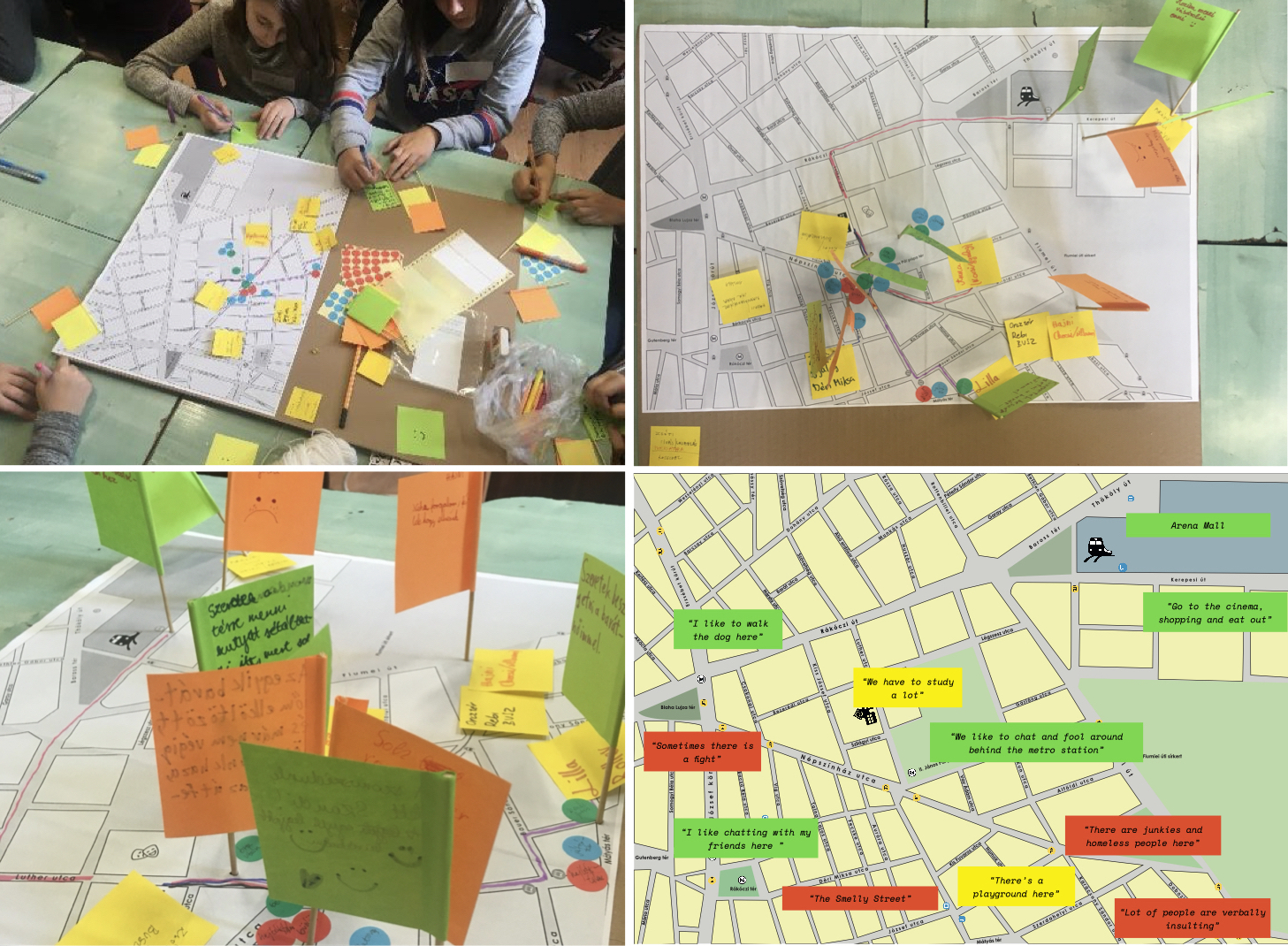
02 / THE PERFECT STREET WORKSHOP
We were curious about how they use the public area surrounded by the school and which route they take to get there, what feelings they have about it, and what the memorable places are.
01. Brainstorming
Where do you really feel good?
Where would you like to go?
02. Street beautification with collage
03. Street beautification with Lego


TWEEN CITY - SAFETY & ENTERTAINMENT
After the evaluation of the first two workshops, we decided to work with safety and entertainment from goals that UNICEF and EU set up about the child-friendly city. Following the first two workshops and the age-specific research, we came up with three keywords that best describe this age group. We found that preteens don't have a place to go that especially suits them after school in the city to hang out with friends.
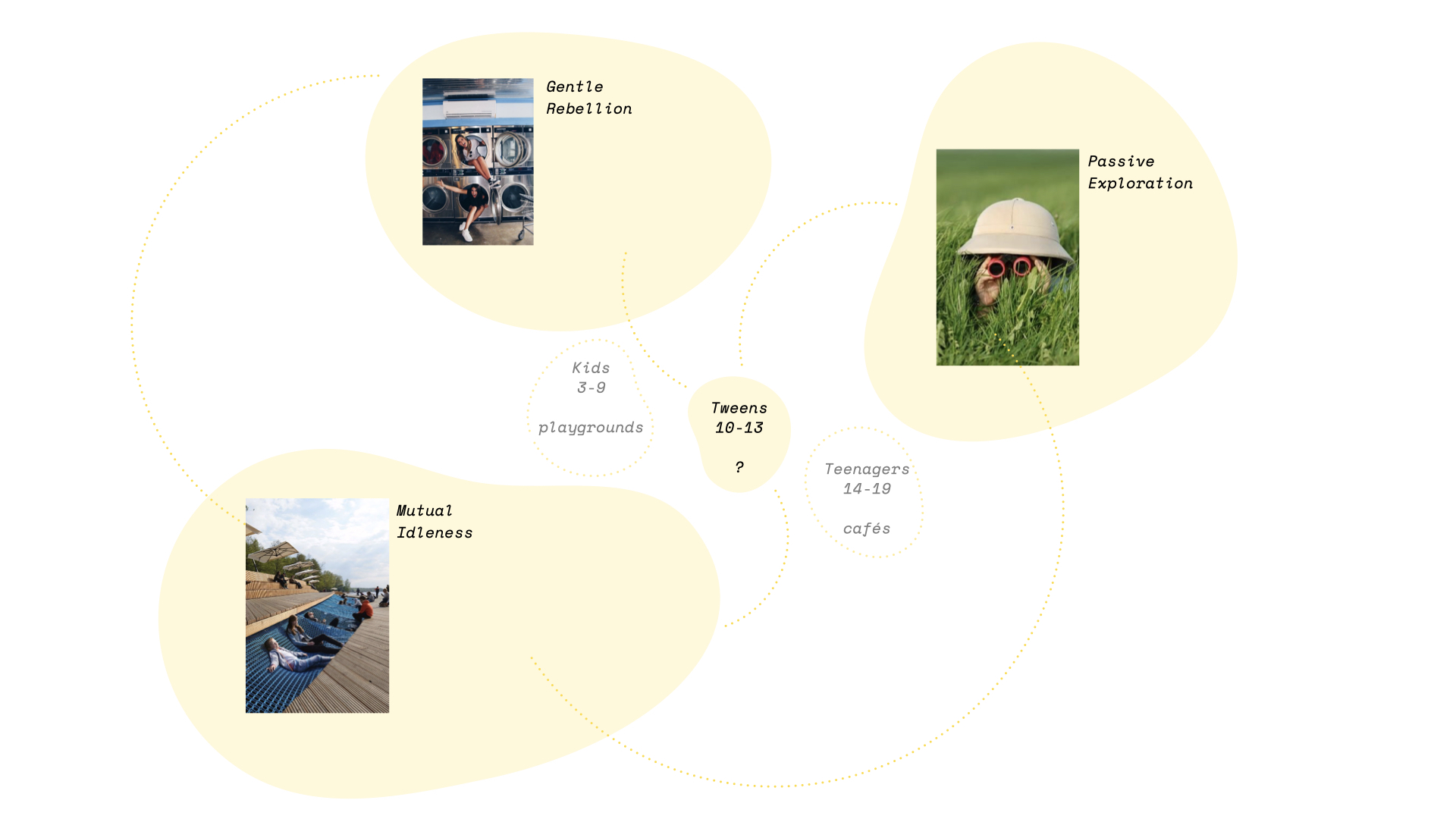
SCALE & FUNCTION
We created a system where we place our function according to how active or passive they are to use and whether or not it needs to be guided. On the drawings, we illustrated the scale compared to the functions.
We analyzed the different scales in an urban setting and selected the ones that were feasible in the context of school and its area. We sketched different settings and elements in these scales to find functions and materials.
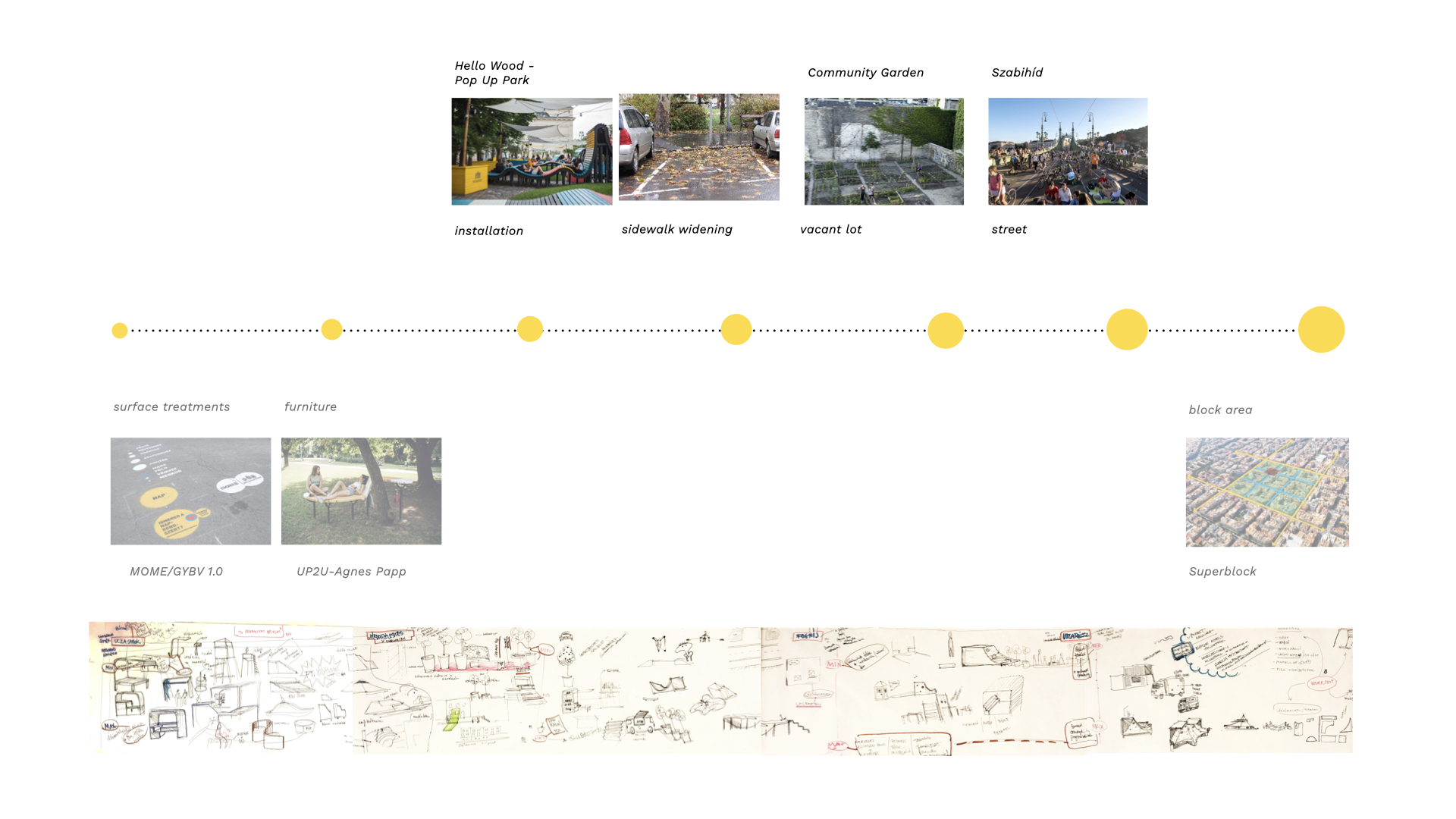

03 / SCENARIO WORKSHOP
We wanted to test the previously mentioned concepts and what functions the kids thought of. We created three scenarios where the kids have control over their surroundings and can create their own comfort zones in public areas. In groups, they play out the city part as a short story using lego, drawings and post-its. Finally, they were asked about how they played out the story and discussed what they had built.
01 / The malls, shops and restaurants were closed.There is a street that is only yours and only you can go there.Build a bunker where you can survive this situation!
02 / Wednesday, May 14th.You can’t go home after school so you have to be on the street. There was a very exciting event at school that you would discuss at length.Create a perfect place to discuss this event
03 / The adults are gone, the city is yours and you are in control.You can get to your secret gathering point on a particular route.Create an observation station along the route.

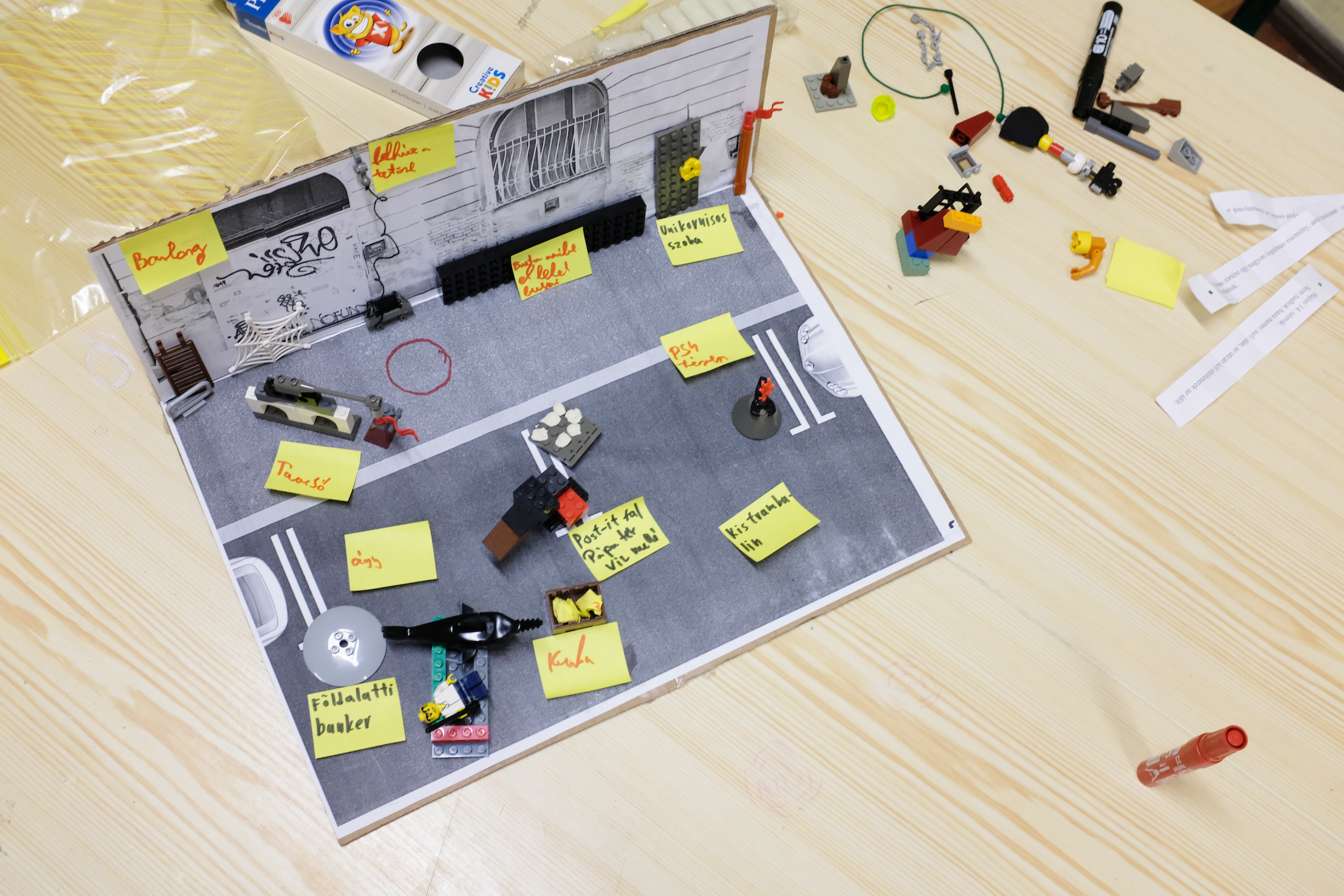

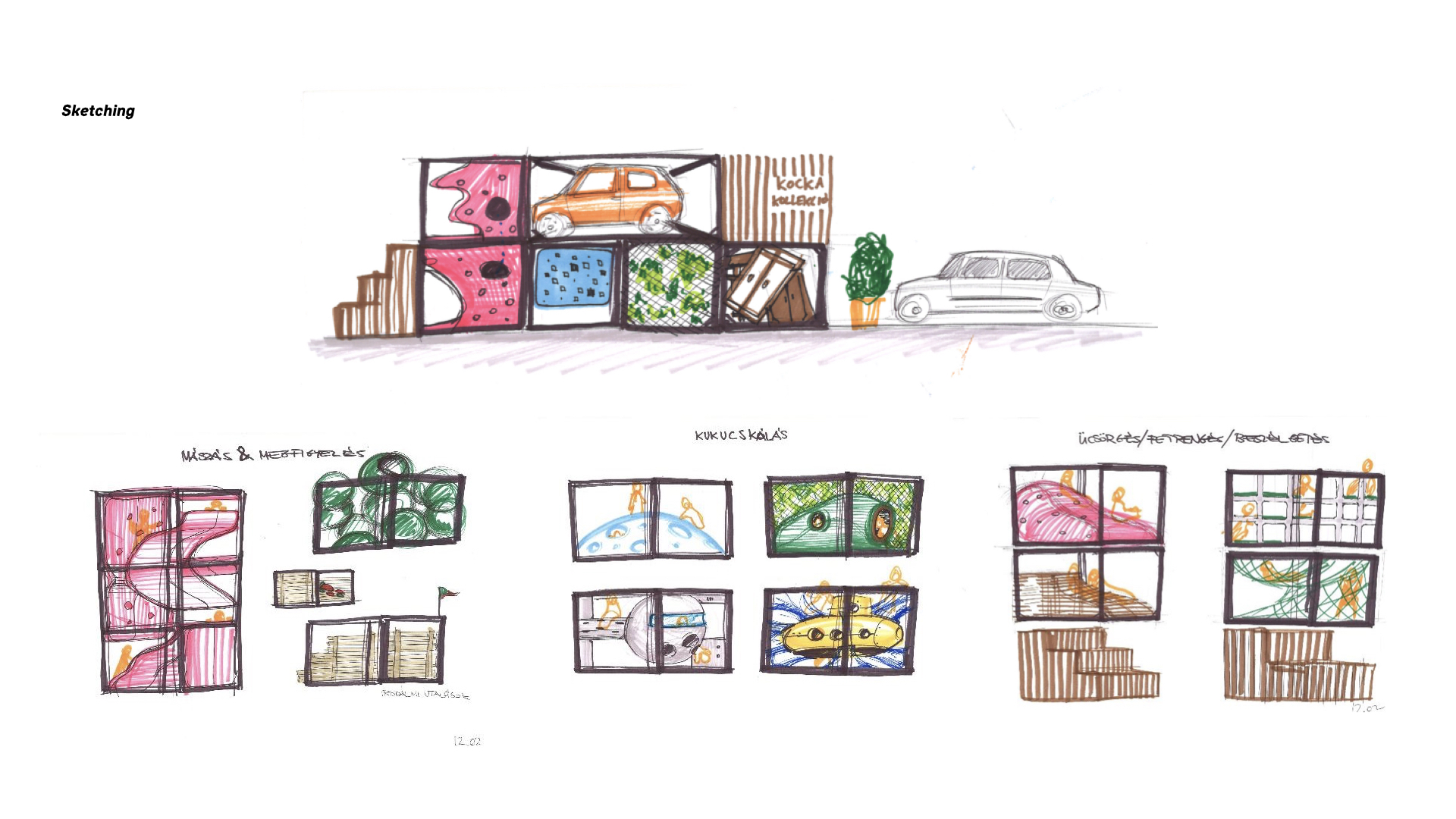
DESIGN & SERVICE
We created a system that can be applied for different functions and scales throughout the city, specially made for tweens based on the three concepts we created in our workshops. Kids in school can design their own cubes and their functions, which would be built near their schools.
